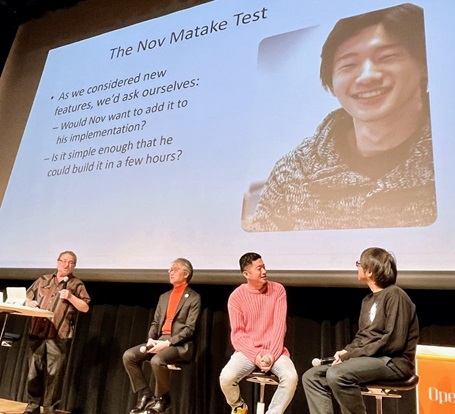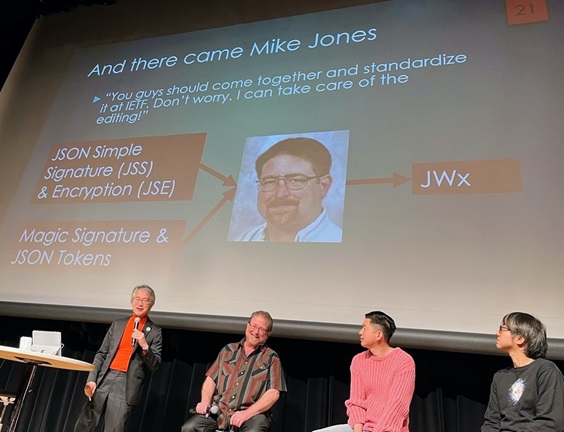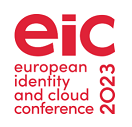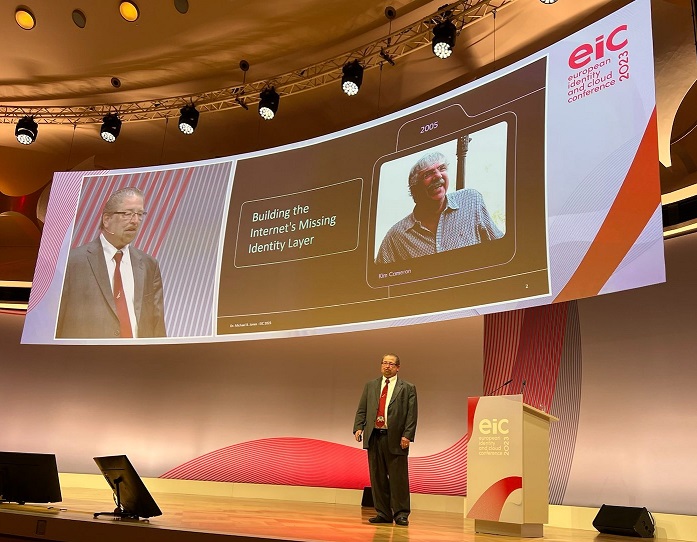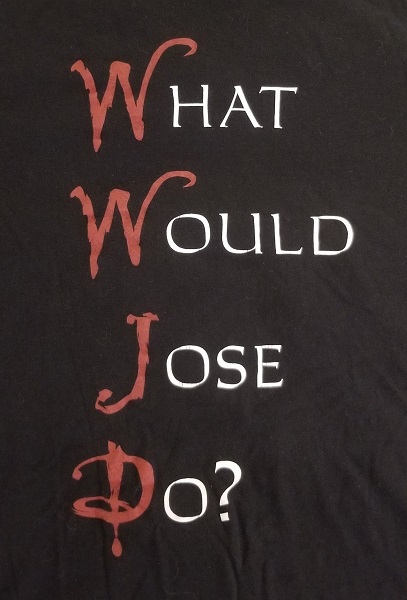
 We held the second and third of the three planned tenth anniversary celebrations for the completion of OpenID Connect at the 2024 Identiverse conference and European Identity and Cloud Conference. That concludes celebrations in Asia, the Americas, and Europe!
We held the second and third of the three planned tenth anniversary celebrations for the completion of OpenID Connect at the 2024 Identiverse conference and European Identity and Cloud Conference. That concludes celebrations in Asia, the Americas, and Europe!
At both Identiverse and EIC, panelists included Nat Sakimura, John Bradley, and myself. Chuck Mortimore joined us at Identiverse. And Torsten Lodderstedt added his perspectives at EIC. We shared our perspectives on what led to OpenID Connect, why it succeeded, and what lessons we learned along the way.
The most common refrain throughout our descriptions was the design philosophy to “Keep simple things simple”. This was followed closely by the importance of early feedback from developers and deployers.
Chuck reached back in time to his OpenID slides from 2011. He reflected on what he was thinking at the time versus what actually happened (and why). Torsten pointed out the importance of cooperation, certification, security analysis, open standards, and an approachable community. At Identiverse, Nat reached back 25 years, examining the intellectual underpinnings and history of OpenID. And at EIC, Nat tackled assertions that OpenID Connect can be complex. John concluded by observing that the OpenID idea is greater than any particular specification.
Our recent OpenID Connect 10th anniversary sessions were:
- Identiverse: Panel PowerPoint PDF
- EIC: Panel PowerPoint PDF
They build upon the celebration at the OpenID Summit Tokyo 2024.
Thanks to the organizers of all these events for sponsoring the celebrations!





